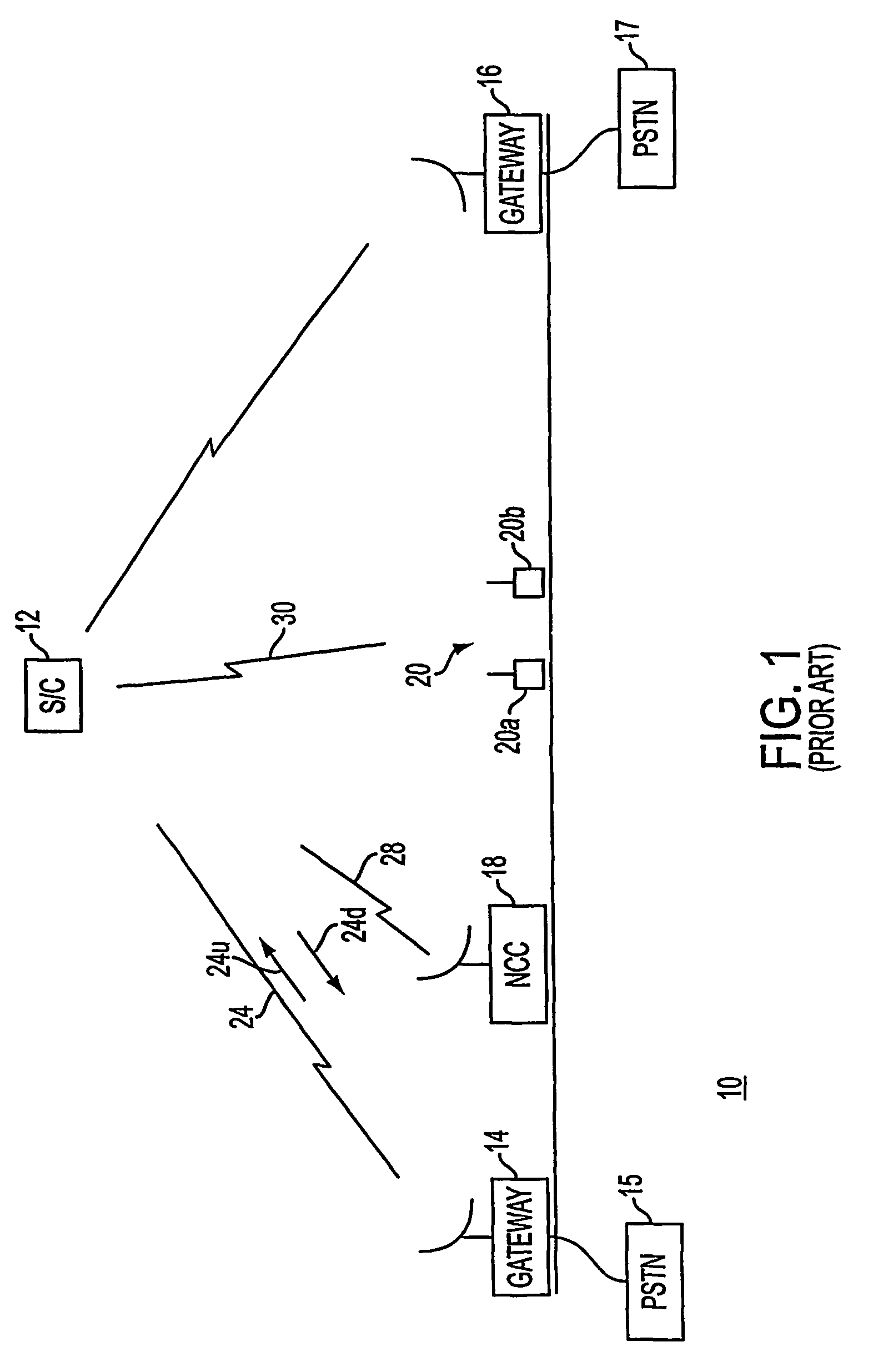Dynamic allocation of network resources in a multiple-user communication system
a communication system and network resource technology, applied in the field of network communication systems, can solve the problems of uneconomical provision of sufficient resources, reduced service for all users, and allocation of available network resources among various users, so as to reduce the request rate and reduce the rate
- Summary
- Abstract
- Description
- Claims
- Application Information
AI Technical Summary
Benefits of technology
Problems solved by technology
Method used
Image
Examples
Embodiment Construction
[0017]In FIG. 1, a spacecraft or satellite-based network communication system 10 includes a spacecraft 12, which communicates with a plurality of gateways, two of which are illustrated a 14 and 16, with a Network Communication Center designated 18, and with a plurality of cellular telephones, two of which are illustrated as 20a and 20b. Such systems are well known, and are described, for example, in U.S. Pat. No. 5,717,686, issued Feb. 10, 1998 in the name of Schiavoni; U.S. Pat. No. 5,875,182, issued Feb. 23, 1999 in the name of Hatzipapafoutiou; U.S. Pat. No. 5,907,541 issued May 25, 1999 in the name of Fairholin et al.; U.S. Pat. No. 5,974,314, and 5,974,315, both issued Oct. 26, 1999 in the name of Hudson; U.S. Pat. No. 6,014,372, issued Jan. 11, 2000 in the name of Kent et al.; U.S. Pat. No. 6,072,985, issued Jun. 6, 2000 in the name of Wismer, U.S. Pat. No. 6,118,998, issued Sep. 12, 2000 in the name of Wismer et al.; and U.S. Pat. No. 6,212,378, issued Apr. 3, 2001 in the nam...
PUM
 Login to View More
Login to View More Abstract
Description
Claims
Application Information
 Login to View More
Login to View More - R&D
- Intellectual Property
- Life Sciences
- Materials
- Tech Scout
- Unparalleled Data Quality
- Higher Quality Content
- 60% Fewer Hallucinations
Browse by: Latest US Patents, China's latest patents, Technical Efficacy Thesaurus, Application Domain, Technology Topic, Popular Technical Reports.
© 2025 PatSnap. All rights reserved.Legal|Privacy policy|Modern Slavery Act Transparency Statement|Sitemap|About US| Contact US: help@patsnap.com



